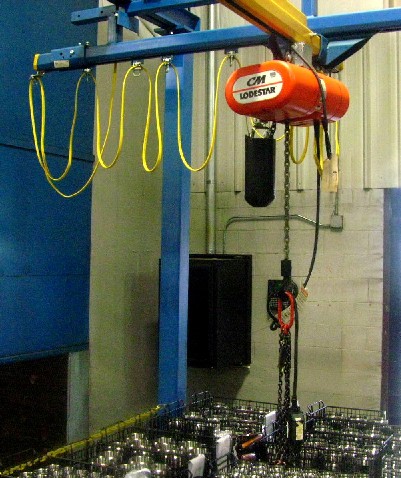 |
| Standard hoist |
Background
Hoists are one of the traditional techniques for picking up heavy loads. However, hoists also have shortcomings, including:
- Slow movement
- Extra steps to bring to where needed
- Need for maintenance
- Safety concerns related to suspended loads.
Hoists often provide the best solution for many applications. Unfortunately, traditional hoists are often the one and only solution that plant personnel consider, when in fact there are many more options. This page provides an overview of alternatives to hoists along with ways to optimize the use of hoists.
Terminology: The terms “hoist” and “crane” are often used interchangeably, but a “hoist” is the device that moves a load up and down and a “crane” is the arm that holds it.
Ideas and Options
Alternatives to hoists
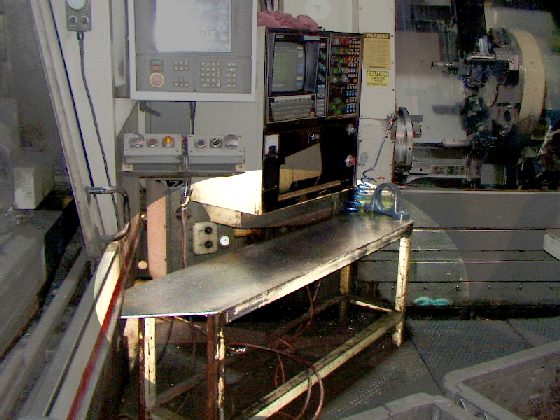 |
| Slide between machines |
A common scenario is to install a hoist, but then discover that it is not being used. Unless the load is very heavy, employees often find it easier to lift a load manually rather than take the trouble to use the hoist. Several of the methods and types of equipment shown on this page can optimize the use of hoists, but a better option may be to develop a different system, such as slides or conveyors.
Increasing loads
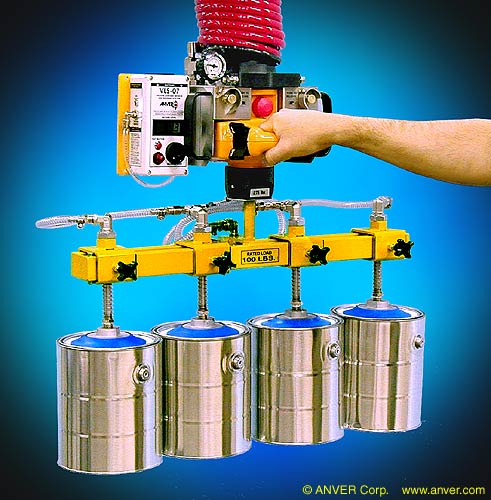 |
| Multi-unit end effector (www.anver.com) |
It is common to consider reducing the load being lifted as a strategy for preventing back injuries. But if a hoist is used, it may be better to increase the weight. Increasing the weight improves productivity, since more materials can be moved in a single transfer. Furthermore, increasing weight can be safer, since it reduces the temptation to try to lift by hand.
Loads can be increased by using larger containers for items being lifted or by designing the end effector of the hoist to lift more items at a single time. In the example in the above image, the hoist enables four cans to be lifted simultaneously, rather than the manual practice of lifting only one or two at a time.
Vacuum
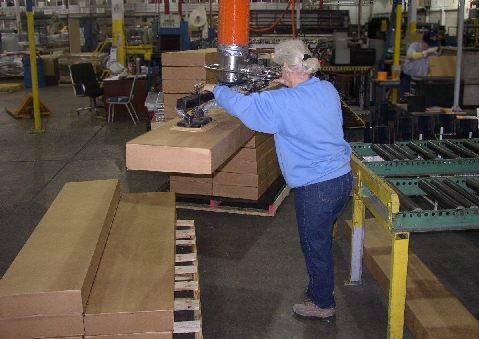 |
|
| Vacuum hoist |
Vacuum technology allows instantaneous coupling and has become particularly popular in recent years. See separate section on vacuum hoists.
Magnet
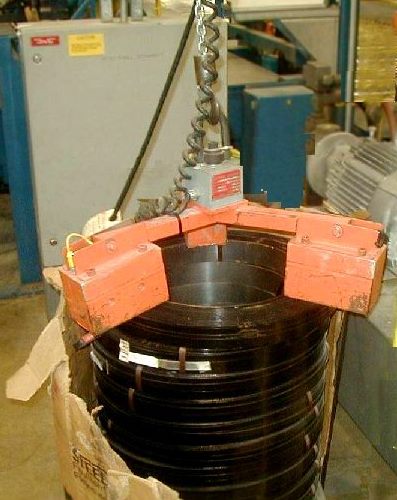 |
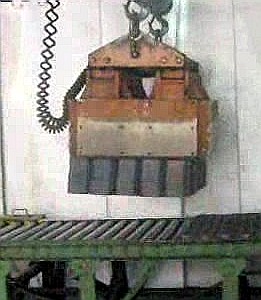 |
| Medium magnet for coils | Heavy magnet to lift pallet-sized loads of parts |
Electromagnet hoists are common, especially in heavy industry. However, in light manufacturing, this technique is often overlooked. Small electromagnets can be used very effectively.
Special slings
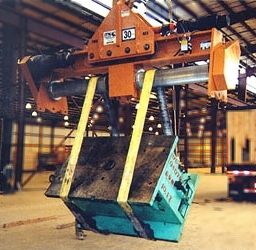 |
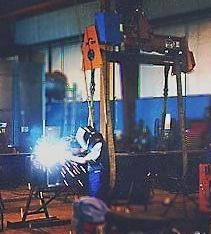 |
| 30-ton capacity rotating sling system (left) and and 3-ton system (right). Both from www.itnac.com | |
A common need is to rotate items as they are being worked on. A unique solution is to use a powered sling turnover system . The photo above left shows a 30-ton injection mold being rotated while suspended, i.e., these slings can handle very heavy loads. Above right, a large product is supported 3-ton rotating sling system at a welding workstation. The sling system thus serves as a work positioner.
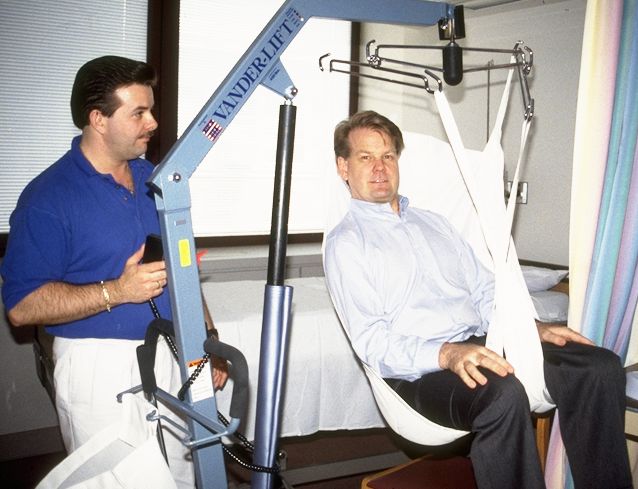 |
| Sling for hospital patients (www.vancare.com) |
A rapidly growing use of slings and hoists is in health care settings. The photo above shows the author testing a patient lift. An implication is that creative use of slings in industrial operations may provide innovative solutions for tough lifting tasks.
Common Problems
Off center load
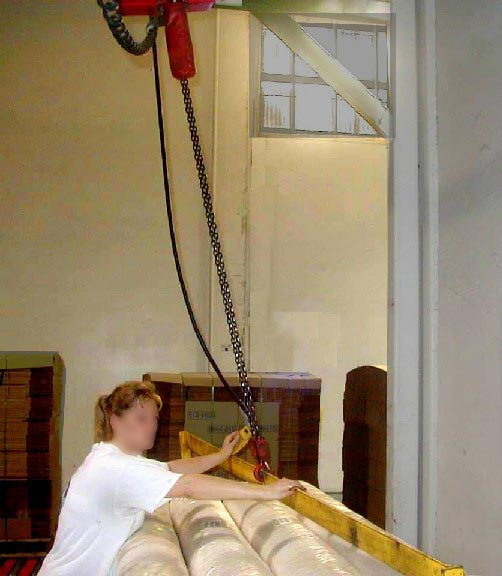 |
| Load off center from position of hoist |
Beware of positioning the hoist and the load off center from vertical. Pulling on the chain can create strain on the upper torso, in part because of the extended position of the arms. Furthermore, a safety hazard can be created, if activating the hoist causes the load to swing unexpectedly.
Large pendants
| Large pendant | Small pendant |
Some pendants are quite large for the hand. Depending upon the circumstances, this size may not be a problem, but if the use is on-going and/or the force needed to hold down a button is relatively heavy, it can create strain on the hand. Maximum grip strength is achieved when the thumb and fingers can touch when wrapped around a grip. If the grip is larger, then more hand exertion is required to achieve the same force levels. Thus the larger pendants can create hand strain in a way that the smaller ones do not.
Bending
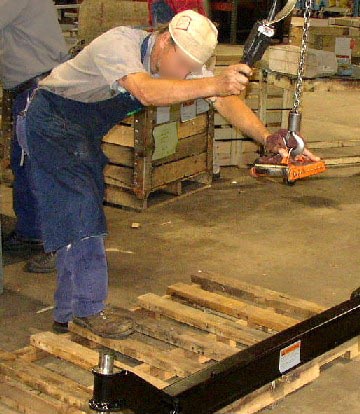 |
| Bending to use hoist |
Hoists can yield dramatic reductions in the risk of injury and improve overall production. But hoists typically don’t affect the height at which people work — they just reduce force. Using a hoist may still put employees into awkward working postures. Moreover, from an efficiency point of view, having to move the hoist the full distance to the floor can take valuable time, depending on the task. Consequently a lift or fixed height stand for the pallet may still be advisable.
Cranes
Small
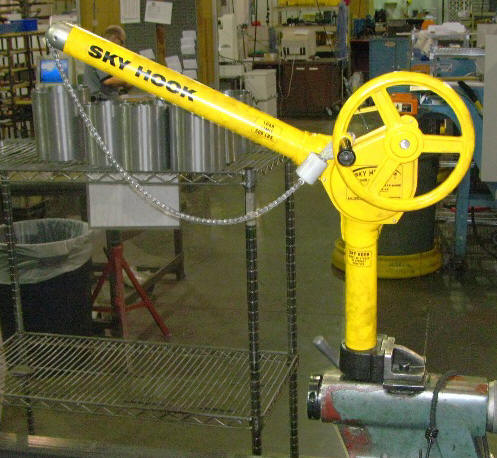 |
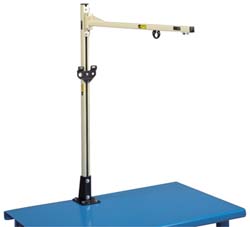 |
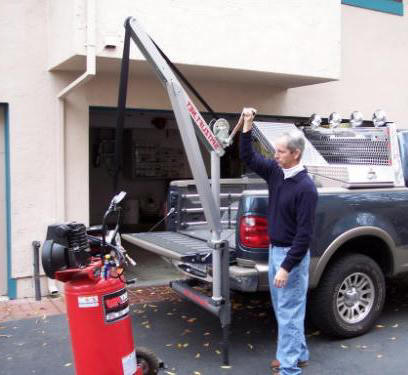 |
| On lathe | On workbench | On pick-up truck |
Some cranes are small enough to be mounted on workbenches or machinery. Cranes designed for pick-up trucks are a size that can be used in many locations. Vendors include www.skyhook.cc,www.spitzlift.com, www.westernmule.com, and www.thern.com.
Portable
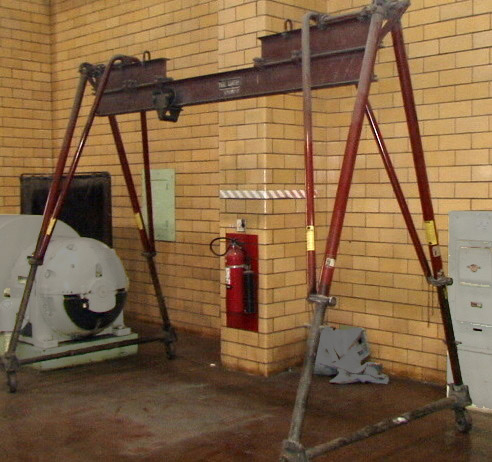 |
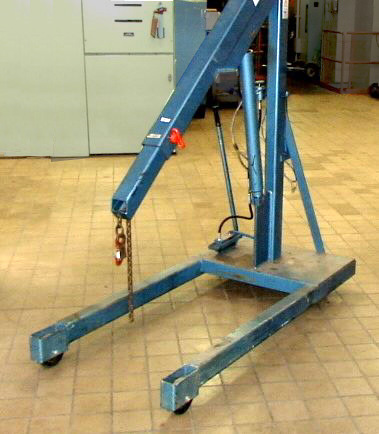 |
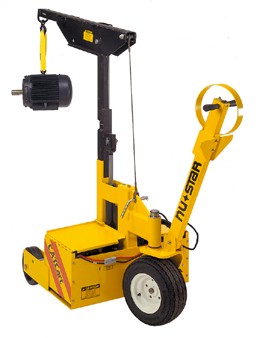 |
| Gantry | Jib | Boom |
Portable cranes are common and available from multiple sources. However, the boom-style unit (at far right) is unique; available from www.nustarinc.com.
Definitions: gantry, jib, and boom
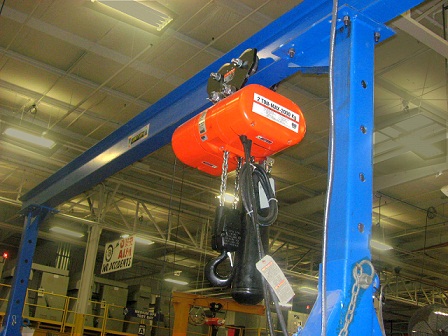 |
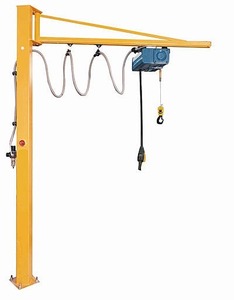 |
 |
| Gantry | Jib | Boom |
It can be helpful to know some basic crane terminology. A “gantry” crane has two posts that support an overhead rail; the hoist can be moved along this rail. A “jib” crane is a rail supported by only one post, which swivels, so that the rail for the hoist moves in an arc. A “boom” is a long arm that typically is oriented at an angle going up and out. Some booms are telescoping. The boom show above right is an adapter for a forklift. See both sets of photos above.
